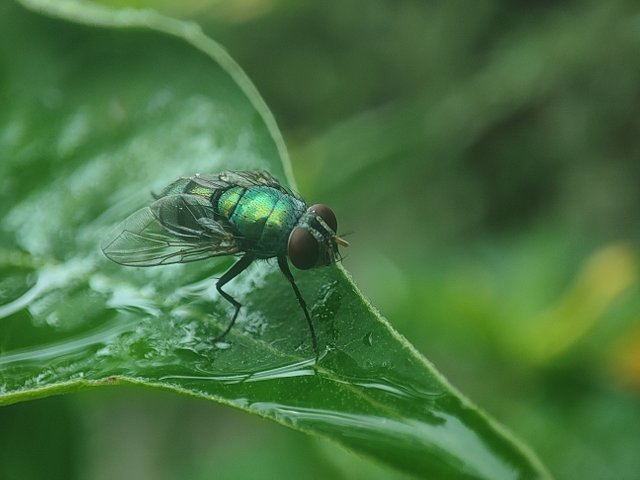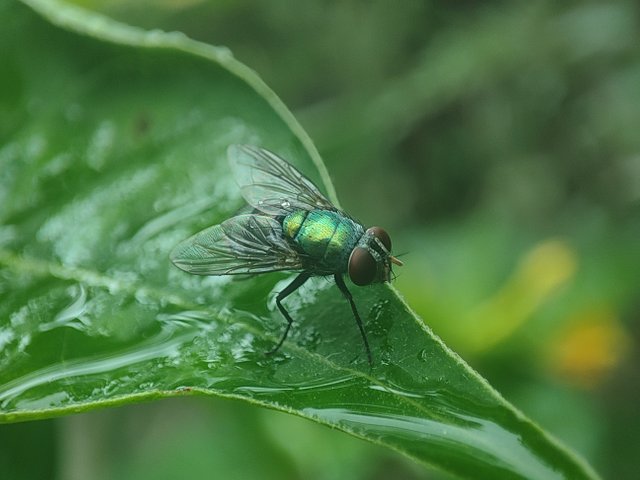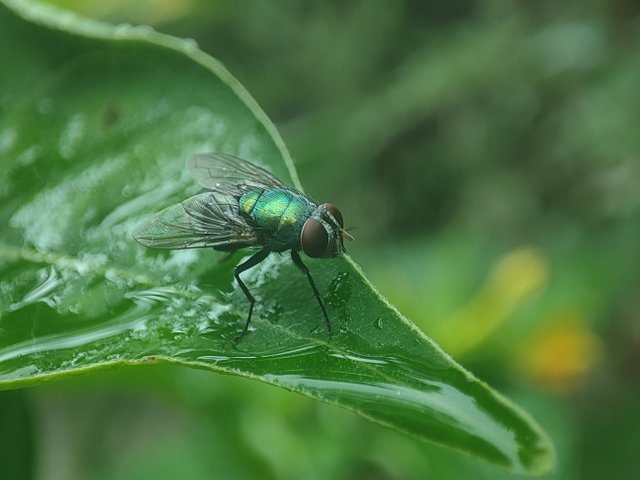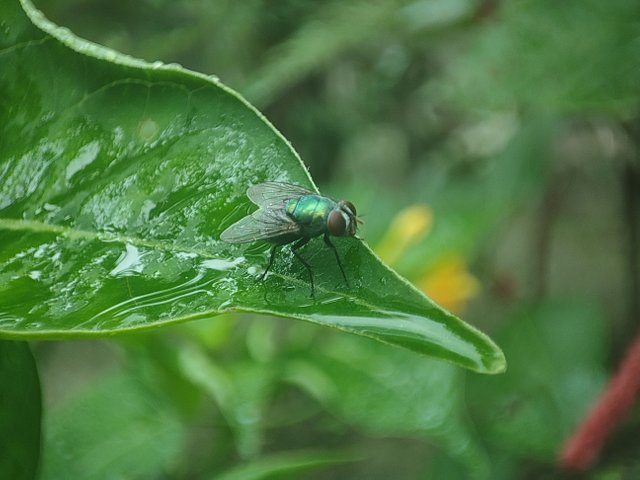The Common Green Bottle Fly is a well-known species within the Calliphoridae family, often recognized by its vibrant metallic green body. These flies are ubiquitous, found across many parts of the world including North America, Europe, Asia, and Africa. Despite their unassuming size, typically around 6-10 millimeters in length, they play a significant role in both ecological systems and human environments.
Physical Characteristics
The most distinctive feature of the Common Green Bottle Fly is its iridescent green exoskeleton, which can shimmer with shades of blue and copper under certain lighting conditions. The body is robust and slightly hairy, with large compound eyes that provide a broad field of vision. The wings are clear and well-developed, enabling agile flight. This species, like other flies, has three pairs of legs, each equipped with claws and pads that allow them to walk on a variety of surfaces, including ceilings and walls.
Life Cycle and Reproduction
The life cycle of Lucilia sericata consists of four stages: egg, larva, pupa, and adult. Females lay their eggs in decaying organic matter, including animal carcasses, feces, and even open wounds. Each female can lay up to several hundred eggs, which hatch within 24 hours under optimal conditions.
The larvae, or maggots, are white or cream-colored and are voracious feeders. They play a crucial role in decomposition, breaking down dead organic matter and recycling nutrients back into the ecosystem. This stage lasts about 3-10 days, depending on environmental conditions such as temperature and food availability.
Once fully grown, the larvae migrate away from the food source to find a suitable pupation site. They enter the pupal stage, which is a period of transformation within a hardened shell. This stage can last from a few days to several weeks. Eventually, adult flies emerge, ready to start the cycle anew.
Ecological Role
Common Green Bottle Flies are important decomposers in natural ecosystems. By consuming dead animals and other organic waste, they help to recycle nutrients and speed up the process of decomposition. This is crucial for maintaining the balance of ecosystems and preventing the accumulation of rotting matter, which could otherwise lead to the proliferation of harmful bacteria and other pathogens.




